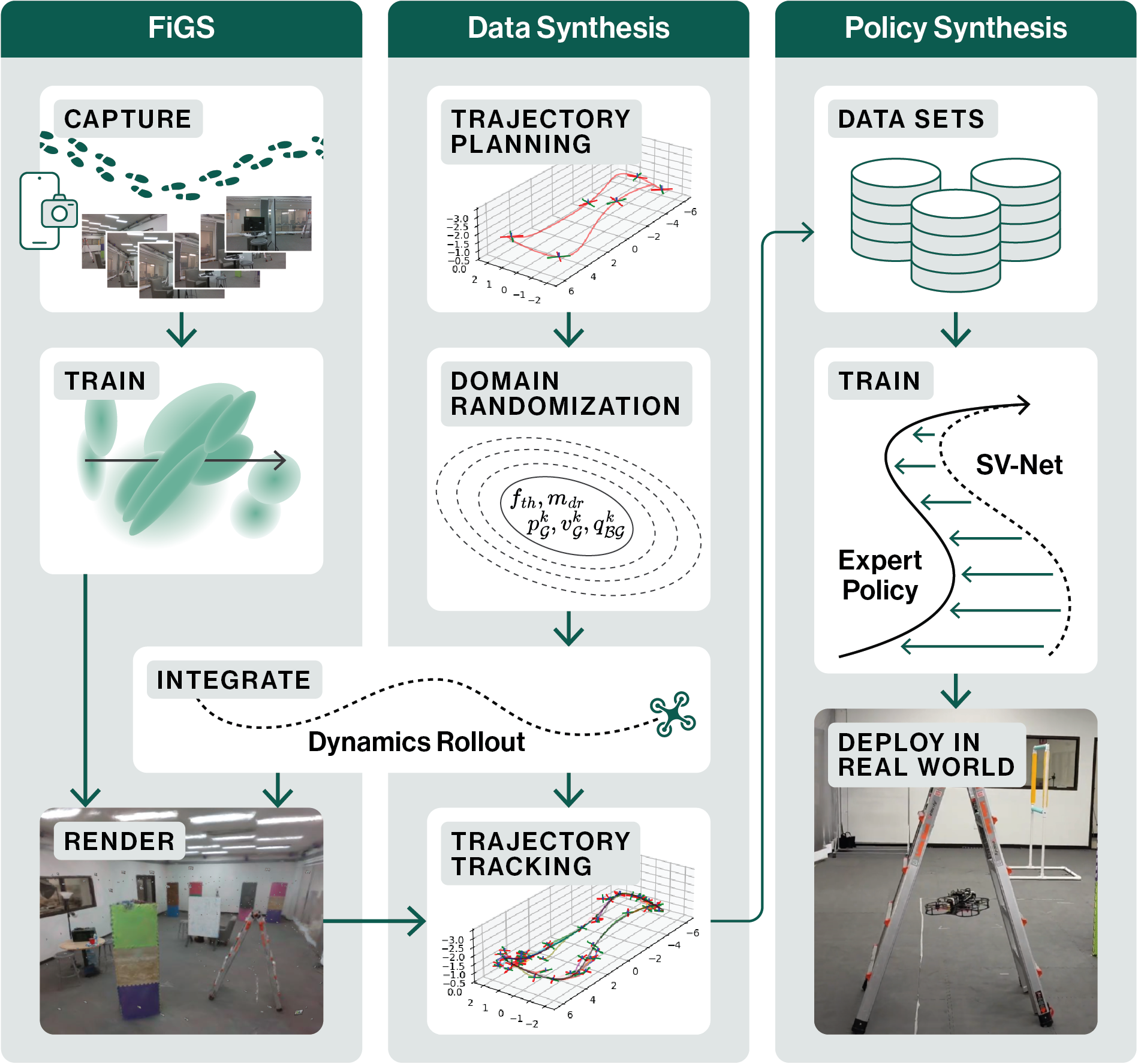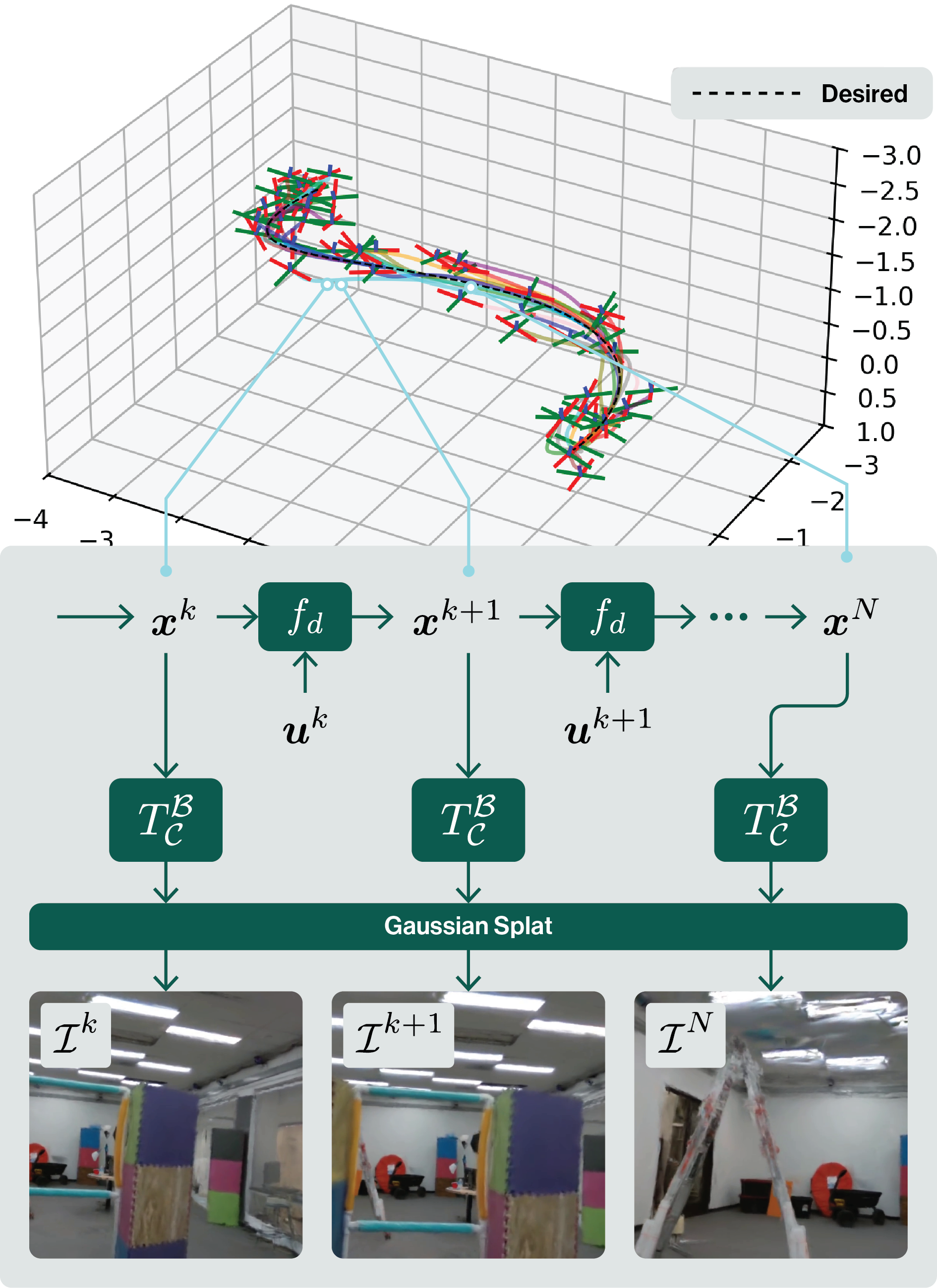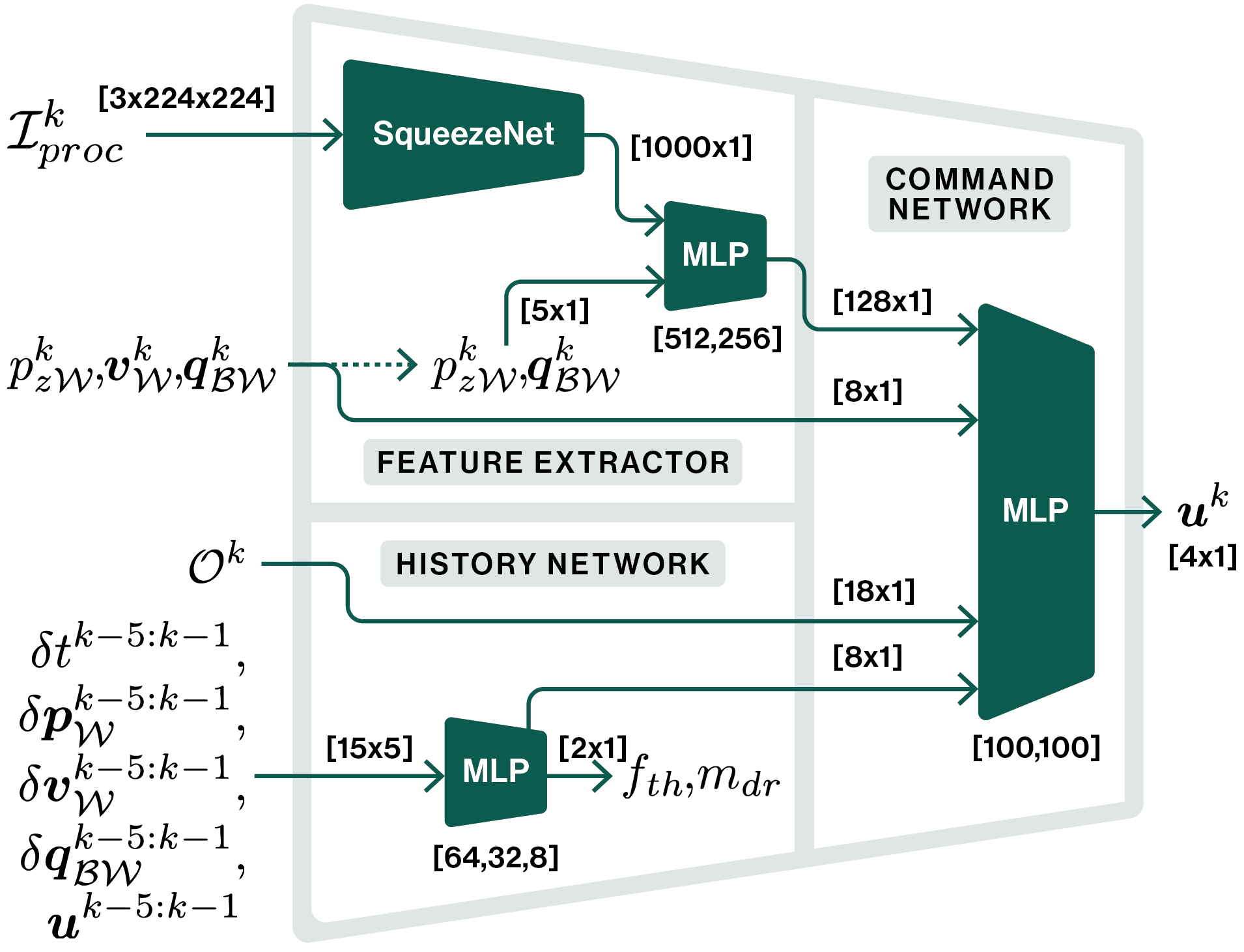We propose a new simulator, training approach, and policy architecture, collectively called SOUS VIDE,
for end-to-end visual drone navigation. Our trained policies exhibit zero-shot sim-to-real transfer with
robust real-world performance using only onboard perception and computation. Our simulator, called FiGS,
couples a computationally simple drone dynamics model with a high visual fidelity Gaussian Splatting scene
reconstruction. FiGS can quickly simulate drone flights producing photorealistic images at up to 130 fps.
We use FiGS to collect 100k-300k image/state-action pairs from an expert MPC with privileged state and
dynamics information, randomized over dynamics parameters and spatial disturbances. We then distill this
expert MPC into an end-to-end visuomotor policy with a lightweight neural architecture, called SV-Net.
SV-Net processes color image, optical flow and IMU data streams into low-level thrust and body rate
commands at 20 Hz onboard a drone. Crucially, SV-Net includes a learned module for low-level control that
adapts at runtime to variations in drone dynamics. In a campaign of 105 hardware experiments, we show SOUS
VIDE policies to be robust to 30% mass variations, 40 m/s wind gusts, 60% changes in ambient brightness,
shifting or removing objects from the scene, and people moving aggressively through the drone's visual
field. Code, data, and videos can be found in the links above.



